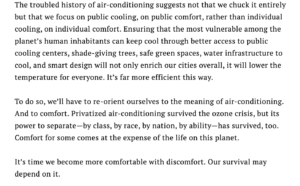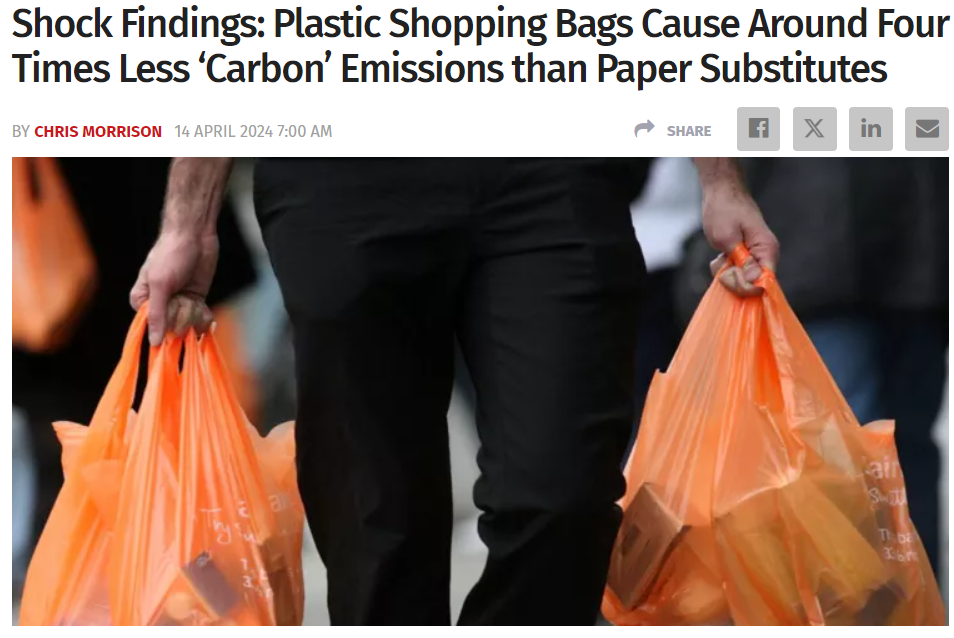By JAZZ SHAW
The troubled history of air-conditioning suggests not that we chuck it entirely but that we focus on public cooling, on public comfort, rather than individual cooling, on individual comfort. Ensuring that the most vulnerable among the planet’s human inhabitants can keep cool through better access to public cooling centers, shade-giving trees, safe green spaces, water infrastructure to cool, and smart design will not only enrich our cities overall, it will lower the temperature for everyone. It’s far more efficient this way.
To do so, we’ll have to re-orient ourselves to the meaning of air-conditioning. And to comfort. Privatized air-conditioning survived the ozone crisis, but its power to separate—by class, by race, by nation, by ability—has survived, too. Comfort for some comes at the expense of the life on this planet.
It’s time we become more comfortable with discomfort. Our survival may depend on it.
So there’s the answer. Air conditioning is on the climate change naughty list, so it needs to go. No, we’re not going to offer you a more climate-friendly way to cool your home. You just need to ditch your AC and get used to being hot and sweaty. For the good of the planet.
All I can say to the article’s author, Eric Dean Wilson, is… up your nose with a rubber hose, pal. (Younger readers may have to ask their parents about that reference.)
Now, for the more sane among you, we’re probably stuck with the sort of air conditioning we have now for the time being, but there are options. And necessity is the mother of invention, so we’ll need even more of them in the future. What we need is some technological breakthroughs in temperature control. We’re the sort of clever monkeys that have traditionally managed things like that, so hopefully, someone is working on it.
In the meantime, there are a couple of innovative ideas out there for home cooling that you might want to look into. One possibility might be to consider building a swamp cooler. (You can watch a video on how to build one for yourself.) It works on the principle of evaporative cooling and having one can cool off a room pretty effectively. The only problem is that you need to be in a relatively dry environment for it to work efficiently because it releases water vapor into the air. It’s great in the desert southwest, but if you are in an area where the humidity is already near maximum, it won’t do much for you.




